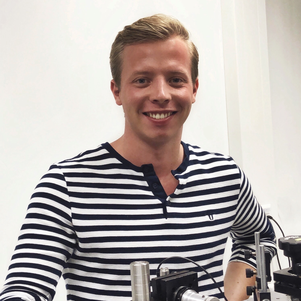Unique coherent Soft X-Ray source arrives in Delft
A unique Soft X-Ray source was recently installed at the Optics Research Group of the department of Imaging Physics. This source will play a key role within the LINX-consortium, which TU Delft leads. The aim of this consortium is to generate new techniques to image extremely small features in 3D, for example on next generation computer chips.
The continuous innovations in the semiconductor industry are leading to ever smaller and more efficient integrated circuits or computer chips. With the rise of the Internet of Things (IoT), the demand for these next-generation chips is growing. However, the manufacturing process is not perfect, leading to defects in the chips. Imaging, metrology and inspection are required to observe these defects and further improve the chips. But since these features are becoming extremely small (already 10.000 times smaller than a human hair), imaging these defects is a real challenge.
Improving resolution
In general, the minimum size of an object that can be imaged with a microscope depends on the quality of the lenses and the wavelength of the light used to observe the tiny object. So the resolution can be improved by using shorter wavelengths and higher quality lenses. “This new source allows us to go to very small wavelengths up to the Soft X-Ray regime, namely 8 to 30 nanometers”, says PhD candidate Sven Weerdenburg of the Optics Research Group. This will improve the resolution greatly compared to regular optical microscopes, but it adds a very critical challenge: conventional lenses do not exist for this wavelength regime. How, then, can you construct a microscope? It turns out that, even without any lenses, images can still be generated through a method called ‘lensless imaging’.
Lensless imaging
Lensless imaging does not make an image directly, like conventional microscopes, but rather records the light scattered by the object of interest, so-called diffraction patterns. A computer algorithm then resolves a synthetic image by processing a set of these diffraction patterns. Lensless imaging allows researchers to ‘see’ very small features of roughly the same size as the wavelength of the Soft X-Rays themselves (8 up to 30 nanometer). “Lensless imaging solves two problems at the same time”, Weerdenburg adds. “We are no longer limited by the quality of the imaging optics, and we can also make images using wavelengths for which conventional lenses do not exist.” The LINX consortium aims to further improve this resolution by a factor of ten. The video below shows a rendered impression of the source itself and its application.
Brightest source
Generating coherent Extreme UV (EUV) or Soft X-Ray (SXR) light is not an easy task. Conventionally the academic world and the industry relied on enormous and expensive facilities (synchrotrons), some of which have a diameter of hundreds of meters. Although these synchrotrons are extremely bright and very coherent, they are not within the reach of many academics or industry. However, recent innovations in laser technology has led to the availability of matured, marketable, coherent Soft X-Ray sources which fit on a typical optical table. Consortium partner Active Fiber Systems, a spin-off company of the University of Jena, installed this compact source at the Optics Research Group during the summer. Weerdenburg: ”It’s the brightest source of its kind at the moment, which gives us a lot of new opportunities by opening up a new wavelength range for optical metrology here in Delft.”
More information
If you want to know more about the new Soft X-Ray source or the LINX project, please contact Sven Weerdenburg or visit the LINX-website.
LINX-website (copy 1)